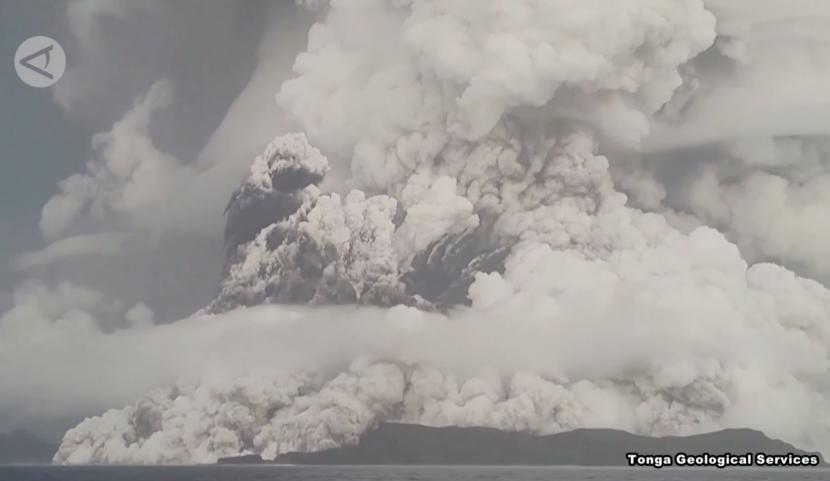This water vapor has the ability to accelerate global warming and damage the ozone layer
A new study reveals that when an underwater volcano in Tonga erupted in January, it squirted enough water vapor into Earth’s atmosphere to fill 58,000 Olympic-sized swimming pools. According to research, this water vapor can be the component of volcanic eruptions that causes the most damage because it has the ability to accelerate global warming and damage the ozone layer.
The Hunga Tonga-Hunga Ha’apai volcano erupted on January 15 with the force equivalent of 100 Hiroshima bombs, making it the most powerful explosion to have occurred on Earth in more than 30 years. The explosion shook the entire world, making the air ring like a bell and forcing a tsunami to hit adjacent coastlines. More than 590,000 lightning strikes occurred over three days due to eruptions whose ash and dust clouds rose higher into the atmosphere than any previous eruption in history.
The findings show that, since the volcano erupted, an additional 160,900 tons (146,000 metric tons) of water vapor have entered the stratosphere, rising 33 miles (53 km) in the mesosphere, the layer of atmosphere that extends from the stratosphere to a height of 53 miles (85 km).
Since NASA’s Aura satellite began taking measurements, this has made it the largest and highest injection of water into the stratosphere. Given that the explosion occurred about 492 feet (150 m) below sea level, the researchers say it’s not entirely surprising that the Tonga eruption sent large amounts of water vapor into the atmosphere. Reported by page Live Science, they claim that when a volcano erupts, seawater in contact with the erupting magma undergoes rapid overheating and produces an excessive volume of ”explosive steam”.
This is one of the main causes of the high explosive intensity. The amount of water was measured correctly for the first time, but was significantly higher than scientists had expected. Large-scale volcanic eruptions often produce reflective compounds in the atmosphere by releasing large amounts of ash and gases such as sulfur dioxide. By preventing sunlight from reaching the planet’s surface, these volcanic byproducts can cool the atmosphere.
However, compared to eruptions of comparable size, Tonga’s eruptions produce very little sulfur dioxide, and most of the ash it spews quickly falls to the ground. Experts initially predicted that an underwater explosion would have little impact on Earth’s climate because of this. This calculation, however, only considers the ash and gases released by the volcano, leaving an excess of water vapor that may be just as dangerous.
The researchers warn that this extra water may be gushing out, warming the atmosphere as much as a greenhouse gas. The water-warming effect is likely to outlast the gas-generated cooling effect as it is expected to last longer than other volcanic gases such as sulfur dioxide, which typically falls from the atmosphere within two to three years.
According to geologists, this suggests that the Tonga explosion may be the first eruption known to have a warming effect on the world rather than a cooling effect. The scientists also noted that such a rapid rise in water vapor would result in less ozone in the stratosphere, potentially weakening the ozone layer that protects life on Earth from the sun’s harmful ultraviolet radiation. Over time, stratospheric water, or H2O, can decompose into OH- ions. These ions may combine with three oxygen atoms to form ozone to produce water and oxygen.
Scientists say it’s uncertain how this might impact the ozone layer as a whole. However, scientists also believe that the increase in water vapor could result in a decrease in atmospheric concentrations of methane, one of the main greenhouse gases linked to climate change.
The same OH ions that react with ozone can also react with methane to create water and methyl radicals, which retain far less heat in the atmosphere than methane. Methyl radicals are formed when methane has one less hydrogen atom than water.
The researchers say they hope this anticipated drop in methane will partially offset the warmth brought on by the water vapor. The exact climate implications of the Tonga eruption are yet to be predicted, according to the study’s authors. To more accurately estimate the many functions volcanic gases play in climate, the researchers note that it is important to continuously monitor gases from current and subsequent eruptions.
–
–


